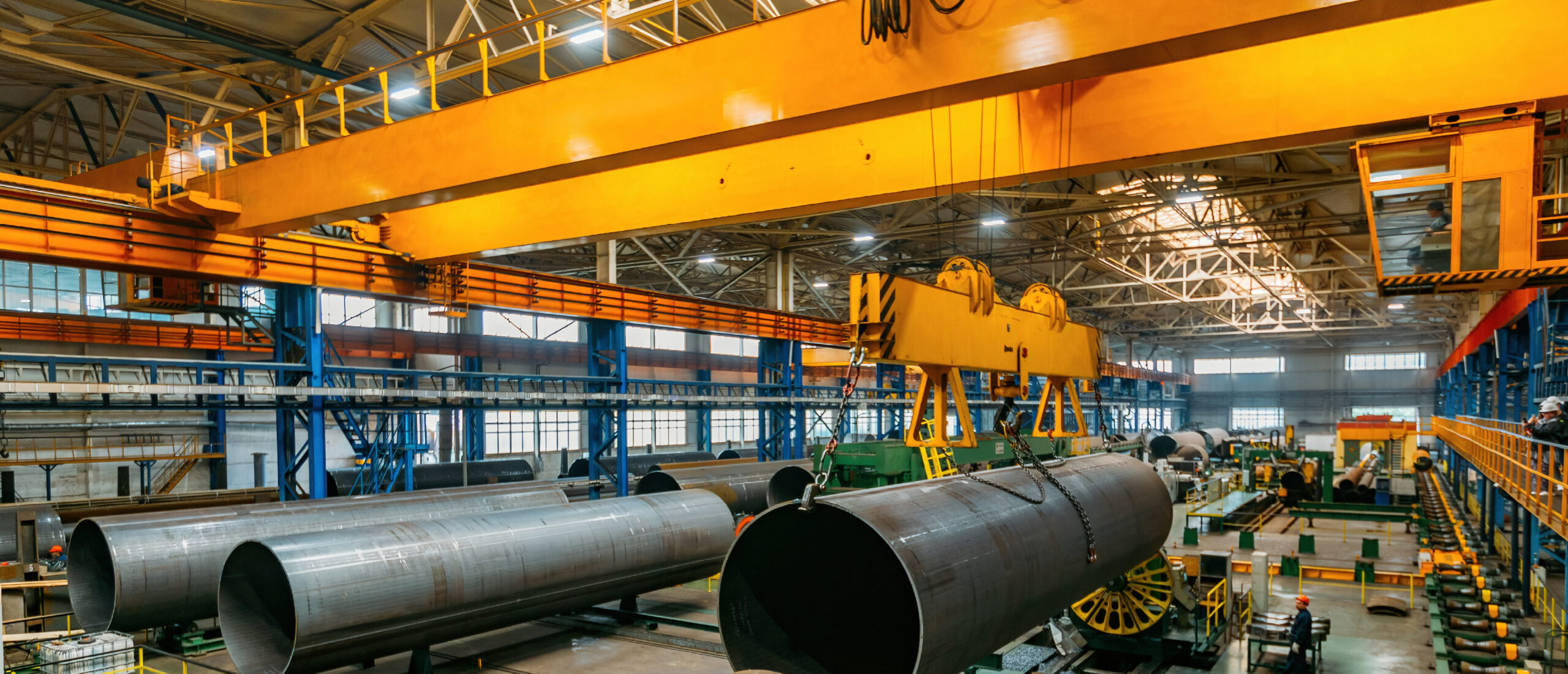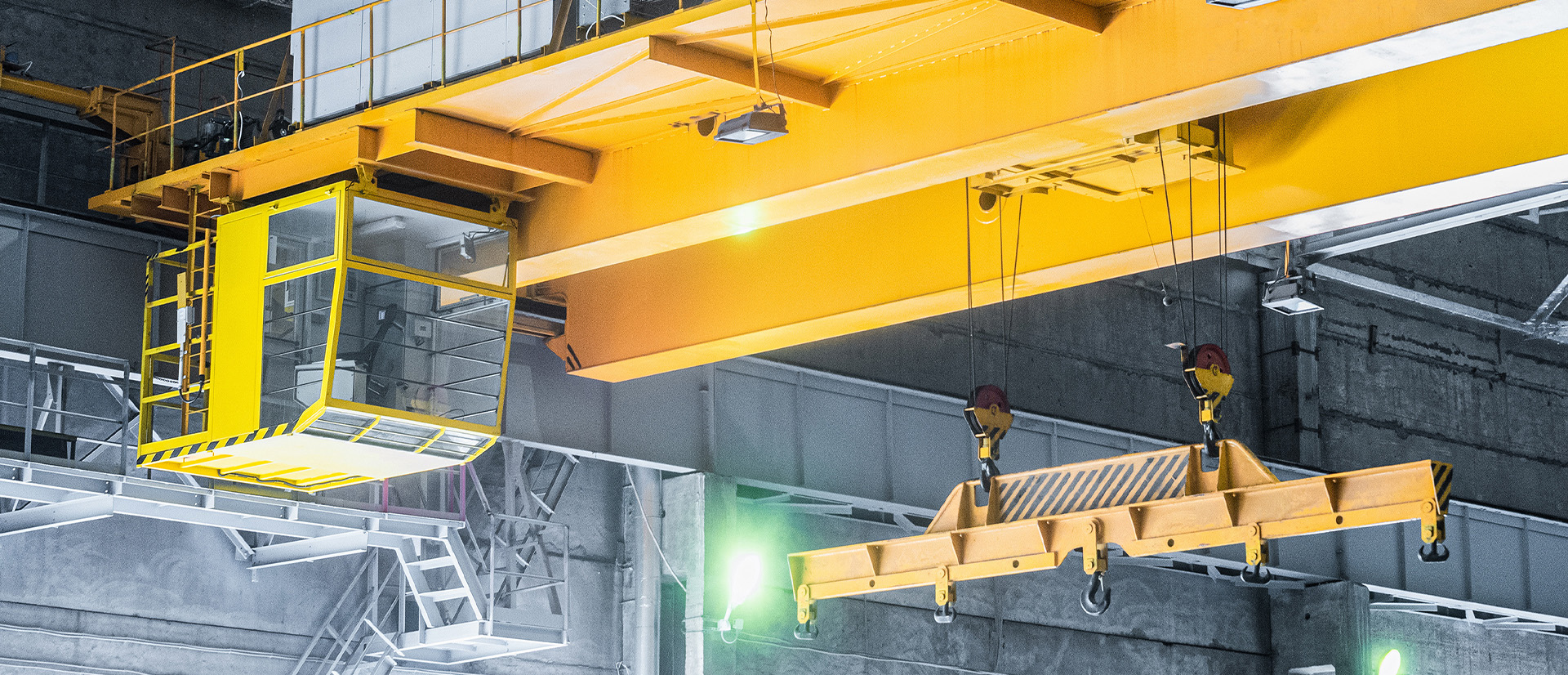Overhead Cranes vs. Forklifts
When it comes to material handling, efficiency, safety, and cost-effectiveness are always top concerns in any industrial environment. Two of the most common equipment types used in these settings are overhead cranes and forklifts. Although both are used for lifting and moving materials, they serve different purposes and have unique advantages and disadvantages that make them more suitable for specific applications. In this post, we will delve into the intricacies of both overhead cranes and forklifts, giving you insight into which may be the better option for your specific needs right here in the Midwest.
The Fundamental Differences
Before we dive into the advantages and disadvantages, let’s first understand what distinguishes an overhead crane from a forklift.
Overhead Cranes
Definition: An overhead crane, also known as a bridge crane, consists of parallel runways with a traveling bridge spanning the gap. A lifting component, known as a hoist, travels along the bridge.
Functionality: Overhead cranes can move heavy and oversized objects that a forklift cannot handle, lifting loads vertically and horizontally across a large area.
Forklifts
Definition: A forklift, also known as a lift truck, is a powered industrial truck used to lift and move materials over short distances.
Functionality: Forklifts are highly maneuverable and can handle a variety of loads, making them ideal for transporting materials quickly and easily around a warehouse or job site.
Advantages & Disadvantages
Each equipment type has specific pros and cons, and understanding these can help businesses in Oak Creek, Wisconsin make informed decisions about what is best for their operations.
Overhead Cranes
Advantages
- Ability to lift heavier weights than forklifts
- Can cover a wider range and area of the workspace
- Reduced risk of product damage since the loads are not typically maneuvered through tight spaces
- Greater efficiency in moving goods vertically and in straight lines
- Safer for workers, as loads are carried overhead and can reduce traffic congestion
Disadvantages
- Higher initial installation costs
- Require a structured facility with adequate height and strong overhead support
- Not as flexible for outdoor or varying site conditions
- Longer training and more specialized maintenance required
Forklifts
Advantages
- Lower initial investment than overhead cranes
- Versatile and can be used in a variety of settings, both indoors and outdoors
- Short operator training period
- Easily transportable; they can be driven to different work sites
Disadvantages
- Limited in the weight and size of the loads they can safely carry
- Can create congestion on the work floor, potentially increasing the risk of accidents
- Greater likelihood of product damage as navigation through facilities can be tight and challenging
- Require sufficient floor space to operate effectively
Application and Cost-Efficiency
Overhead Cranes
Applications
- Best suited for industries where heavy manufacturing, assembly, or maintenance of heavy equipment is involved, such as the automotive, metal fabricating, and heavy machinery sectors.
- Ideal for transporting materials through various stages of production, assembly, or warehousing.
- Excellent for facilities with limited floor space since they operate overhead.
Cost-Efficiency
- High initial investment but can lead to long-term savings due to increased productivity and reduced risk of workplace injuries.
- The lifespan of overhead cranes is often longer than that of forklifts, contributing to a better ROI over time.
- Maintenance and operational costs are higher but are offset by the crane’s ability to handle heavier loads and reach longer distances.
Forklifts
Applications
- Suitable for warehouses, distribution centers, and manufacturing facilities where goods need to be moved frequently over short distances.
- Beneficial for smaller loads and where flexibility and quick responsive movement are required.
- Ideal when operations need to happen both indoors and outside in a yard, where setting up an overhead crane might not be feasible.
Cost-Efficiency
- Although there is a lower upfront cost, the per-hour cost of running a forklift can be higher than an overhead crane due to fuel and maintenance.
- Forklifts have a shorter lifespan and can rack up additional costs related to stock damage and personnel safety incidents if not managed properly.
- Their efficiency in moving loads quickly in limited spaces can sometimes be a key to cost control in less heavy-duty applications.
Elevate Your Operations with Zenar Crane
Both overhead cranes and forklifts are essential to a wide range of industries in Oak Creek, Wisconsin. When it comes to deciding on the best material handling solution, it’s essential to consider the specific needs of your operation. For many businesses, the ideal solution may be a combination of both overhead cranes and forklifts, each playing to their strengths and complementing each other.
If you’re looking to enhance your operations with custom overhead cranes or have a forklift application, it is crucial to consult with a manufacturer that specializes in custom material-handling applications. Not only can they provide equipment tailored to your specific needs, but they can also offer invaluable advice on optimizing your workflow, ensuring compliance with safety standards, and maintaining cost-efficiency for years to come.
Ready to revolutionize your operations with a custom overhead crane facility? Contact Zenar Crane today to learn more about our turnkey crane solutions and how we can help you optimize your material-handling processes. Visit our website to explore our range of products and services, and discover why we are the trusted choice for businesses across the nation.
Read
More
Articles

Troubleshooting Techniques for Overhead Crane Electrical Problems
Nestled within the bustling heart of the industrial sphere, overhead cranes stand as monumental testaments to human engineering and ingenuity. These mechanical behemoths are indispensable in a myriad of sectors, from construction to manufacturing, playing a pivotal role in the lifting and transportation of heavy materials. Yet their pivotal role comes with its set of challenges, especially when it comes to maintaining their electrical integrity.

Sustainability in Crane Manufacturing
The construction industry is a cornerstone of global development but is also one of the largest consumers of energy and producers of greenhouse gas emissions.

Elevate Automotive Operations with Custom Overhead Cranes
Efficiency and precision are top priorities in the automotive industry. Overhead cranes play a crucial role in streamlining operations, from the assembly line to the repair shop. These powerful tools not only enhance productivity but also ensure safety, making them indispensable in modern automotive facilities.